As Bitcoin continues to gain traction in the world of finance and technology, questions arise about its future once the 21 million supply cap is reached. Although none of us here will possibly be alive to witness this event, this article explores the possible scenarios and implications of a fully mined Bitcoin network by 2140 based on the insights provided by Nasdaq, considering the impact on miners, transaction fees, and the broader ecosystem.
The Future of Bitcoin Supply Cap
Bitcoin, created by the enigmatic Satoshi Nakamoto, has a predetermined supply cap of 21 million coins. With over 19 million coins already mined, the remaining few million will be gradually brought into circulation over the coming century.
This supply cap sets Bitcoin apart from traditional fiat currencies and offers a potential hedge against inflationary pressures.
The Role of Miners and Halving Events
Bitcoin operates on an algorithm that adds a new block to the blockchain every 10 minutes. Miners, who validate and add these blocks, are rewarded with block rewards.
Currently, the block reward is 6.25 Bitcoin per block, resulting in the addition of approximately 900 new Bitcoin daily based on Nasdaq estimates. However, after every 210,000 blocks, a “halving” event occurs, reducing the block reward by half.
This phenomenon has a significant impact on miners as it instantly reduces their revenue from block rewards.
The Shift to Transaction Fees
With the reduction in block rewards every four years, miners are increasingly relying on transaction fees as an alternative source of revenue. When a person sends Bitcoin, they must pay a transaction fee, which directly benefits the miner.
Presently, transaction fees contribute a relatively small portion of Bitcoin mining revenue. On average, miners earn approximately 0.14 Bitcoin per block, equivalent to around $4,000 per block or $576,000 per day at current market prices.
As the Bitcoin ecosystem continues to grow, however, the value of transaction fees is expected to increase.
The Road to the Future of Bitcoin in 2140
Based on the current schedule, it is estimated that all 21 million Bitcoin will be mined and in circulation by the year 2140. This lengthy timeline allows for the gradual growth and global expansion of the Bitcoin network.
It presents an opportunity for the ecosystem to mature, with more institutions, banks, and companies embracing Bitcoin as a viable payment system and store of value.
The Importance of Transaction Fees
Transaction fees hold great significance for miners as they become the primary revenue source after all Bitcoin is mined. A strong and consistent stream of transaction fees will be crucial for the long-term health and sustainability of the crypto’s ecosystem.
As the network evolves, increased user adoption and innovative solutions are expected to drive up transaction volumes and fees, supporting miners’ financial stability.
Final Thoughts
The future of Bitcoin beyond the 21 million mark is an intriguing prospect. While the current landscape may be limited in terms of use cases and commercial acceptance, the potential for widespread adoption and the rise of transaction fees present opportunities for miners and the overall ecosystem.
As the Bitcoin network continues to evolve over the years, it is essential to monitor how transaction fees develop and whether they can adequately supplement the diminishing block rewards.
Giancarlo is an economist by profession with a career spanning nearly two decades. His professional journey has seen him assume vital roles in various government and private organizations such as the Department of the Interior and Local Government (DILG), the National Economic and Development Authority (NEDA), Megaworld Corporation, and the China Banking Corporation in the Republic of the Philippines.
In addition to his civic and corporate pursuits, his forward-thinking approach has led him to manage several prominent websites in the banking and finance sector, notably the Australia-based RateChoice, where he immersed himself in the world of emerging financial technologies and where he found particular interest in Bitcoin all the way back to 2013.
Prior to his addition to Blockzeit’s dynamic team, he held an essential role as Project Manager for initiatives encompassing blockchain, stablecoin, mining, special economic zone development, and iGaming. This noteworthy chapter in his career unfolded under the auspices of InPlan Consultancy Services, Inc., the think-tank of IMPERO Consortium Management Corporation headquartered in Manila, Philippines, and Tokyo, Japan. InPlan, led by a distinguished retired Cabinet member of the Philippines, collaborates directly with IMPERO’s core management team, contributing to strategic planning and business development endeavors.












